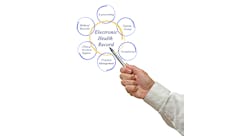One of those constants may be utilization management (UM) – yet not the traditional UM we all know today. We would need to move traditional UM toward an exception-based, shared decision-support model that provides intelligent and actionable content to both payers and providers. It needs to help them determine the appropriateness of the care at each point where there is a care decision to be made. While traditional UM is often a source of contention and significant administrative cost, it is perhaps the one dimension of the current paradigm where payers and providers can effectively communicate, prior to care delivery and incurring costs.
| Using shared, actionable and intelligent decision support starts payer-provider collaboration today. |
The problem with traditional payer programs
Traditional payer programs require expensive, manual resources and do not adequately engage providers. Costs to providers to administer payer processes, such as utilization management, have been estimated at $31 billion annually.1 The time and effort required to process authorization requests – combined with a response time of several days or more – slows the care-delivery process, adds inefficiencies and frustrates relationships with providers and their payers.
| Payers and providers have the same problem. They need to work collaboratively to solve it. |
At the same time, these processes are also inefficient for payers. For example, 90 percent of pre-authorizations require phone or fax communications, which take time and add up to $50 to $100 in payer costs on average per authorization.2 In addition, they fail to deliver the desired results. Experts estimate 17 to 20 percent of medical care is unwarranted, including unnecessary hospitalizations and duplicative tests.3
Point-of-care decisions are critical to realize real value
A key contributor to these costs is the inconsistency in clinical decision making that often occurs when payers and providers rely on traditional, manual utilization-management processes and incomplete coverage and network information at the point of care. When providers and payers wait until after care has been delivered to discuss the care event, opportunities to avoid inappropriate care or use lower cost, high-quality providers are missed; the costs have already been incurred.
Although the pre-authorization process comes before a claim, it’s an onerous, manual process that requires a great deal of investment by both the providers and payers. Providers prefer automation because they can receive immediate approval on requests. However, it’s not practical to assume automatic approval for every request. With an automated system that is intelligent and exception based, though, each request is resolved much faster, due to the consistent and transparent framework that both provider and plan can share. That automated system also enables providers to see clinical guidance that is based on widely accepted medical evidence, while also seeing that plan’s specific coverage policies – helping the provider make more informed decisions at each point of care.
There are many more touch points in the care-delivery process before actual care is delivered and its cost incurred where payers and providers could make shared, evidence-based care decisions. If you can enable transparent decision making at each point of the care continuum, you create real value for both payers and providers and, as a result, the patient.
Rethinking utilization management
So what is the first step in which payers and providers can better collaborate to surmount clinical and financial silos to improve care without increasing administrative burden? To move toward a model that will bridge from current to future, we need a new approach to utilization management that requires shared decision making at each point of care. The traditional medical-management programs that have been entrenched for decades will not be easy to change, but it is essential that payers and providers embrace a point-of-care approach that leverages smart automation and improved collaboration to help deliver cost-effective care now and build a foundation for long-term success.
| The importance of point-of-care decisions. |
This innovative view of utilization management has four guiding principles:
- Transparent. Payers and providers base their decisions on the same, shared information, eliminating contention while improving collaboration and optimized decision making.
- Actionable. Content is “intelligent” in that it recognizes the context in which it is invoked and automatically delivers specific and relevant guidance to the point of care to influence decision making. Ideally, this guidance combines evidence-based clinical guidelines, plan-specific coverage rules and medical and network policies information.
- Prospective. Relevant information is delivered in real time, before providers deliver care, and is accessible within their workflow.
- Exception based. Automating workflows shortens the path from request to decision, giving providers a quick response and low administrative burden in the majority of cases, while allowing health plan clinical staff to focus on the more complex “exceptions” truly requiring their time and expertise. In an ideal world, most of the automation is delivered behind the scenes, with alerts generated only for the exceptions.
This next-generation approach to utilization management will rely on innovative technology that suits both payers and providers. Companies, such as McKesson, are working on these point-of-care, decision-support solutions to help our healthcare system make the leap to value-based care. However, it is a process that will require courage, collaboration and compassion from both payers and providers to make it a reality.
References:
- Casalino LP et al. “What Does it Cost Physician Practices to Interact with Health Plans?” Health Affairs, Volume 28 No. 4 w533-w543. July/August 2009.
- McKinsey & Company. “Preauthorization sizing.” Proprietary McKesson report, 2008.
- American Medical Association. “AMA Survey of Physicians on Preauthorization Requirements.” www.ama-assn.org/ama1/pub/upload/mm/399/preauthorization-survey-highlights.pdf. May 2010.
About the author
Matthew Zubiller is vice president, decision management, McKesson Health Solutions. For more on McKesson, click here.

